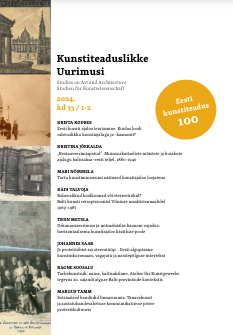Sotsiaalsed bandiidid linnaruumis - Tänavakunst ja aastatuhandevahetuse kommunikatiivne pööre protestikultuuris
Social Bandits in Urban Space: Street Art and the Communicative Turn in Protest Culture at the Turn of the Millennia
Author(s): Margus TammSubject(s): Visual Arts, Rural and urban sociology, Transformation Period (1990 - 2010), Sociology of Art, History of Art
Published by: Eesti Kunstiteadlaste Ühing
Keywords: urban space; city; social bandits; art; protest culture;
Summary/Abstract: The article discusses the politics of contemporary street art. The analysis builds on the characteristic contradiction in the core of street art: it is both illegal and popular. It can be considered both vandalism and institutionally celebrated art. In the popular media, the legitimacy of street art is often reduced to the question: ‘Is it art?’ I argue that such a question is of secondary importance and limits the discussion. To delve deeper into the public stance of street art, I offer the theoretical framework of deliberative democracy, supplemented by the legal philosopher Daniel Markovits’s notion of democratic disobedience and the social historian Eric Hobsbawm’s concept of social banditry. For more precise analysis, I distinguish between street art and graffiti. By graffiti I refer to the subculturally coded visual practice that emerged from the 1970s hip-hop scene; by street art, I am referring to unsanctioned public art that emerged a couple of decades later and is characterised by wider popular appeal, accessible visual language and inclusive humour.
Journal: Kunstiteaduslikke Uurimusi
- Issue Year: 33/2024
- Issue No: 01+02
- Page Range: 209-238
- Page Count: 30
- Language: Estonian
- Content File-PDF

